Birthstones 101 and a Complete Guide to the June Birthstone
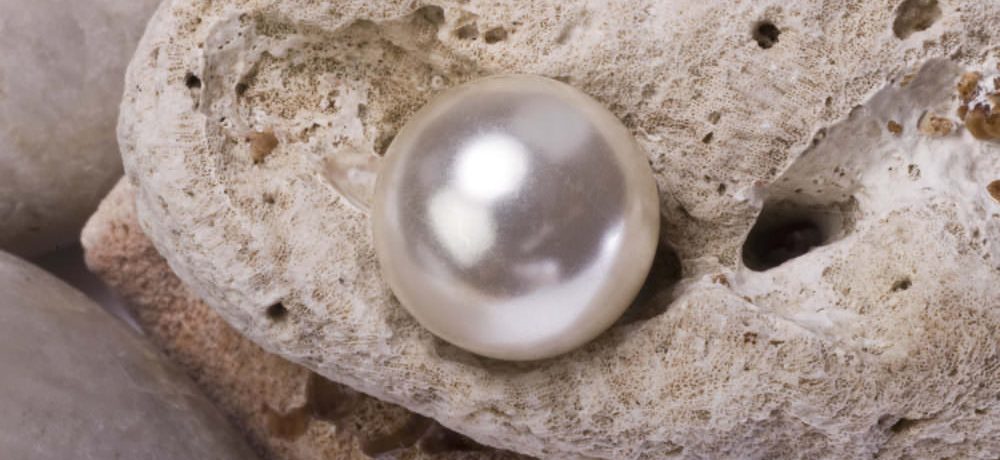

Whether you’re born in June or are looking for the perfect personalized gift for a loved one, birthstones are a stunning choice. But did you know that there is more than one June birthstone? While are the most well known June birthstone, Moonstone and Alexandrite are celebrated, too.
Interested in learning more about these thoughtful pieces? Let’s take a closer look at June birthstones, and some gorgeous June birthday jewelry for the ultimate inspiration.
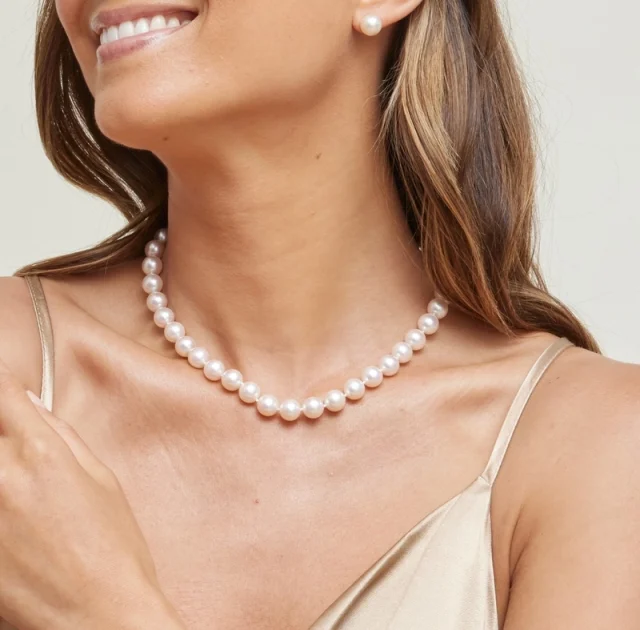
If you’re looking for the perfect gift for someone born in June, there’s nothing like the otherworldly lustre of pearl jewelry. Symbolizing friendship and loyalty, this June birthstone is a stunning keepsake and will show how much you care.
Browse our collection of lustrous June birthstone jewelry made from Freshwater Pearls, Akoya Pearls, or South Sea Pearls. There’s a perfect heirloom piece for everyone!
First, let’s understand birthstones in general! Birthstones are a type of gems that represent a person’s birth month—each month has a unique gem (or gems). These birthstones usually hold a special meaning, and have been worn since ancient times for their individualized benefits.
Birthstones are usually turned into beautiful pieces of jewelry that can be worn and celebrated. They’re often presented as a special June birthday or anniversary gift, but don’t need a special occasion to be enjoyed! And it’s worth noting that while everyone will have their own birthstone, there really are no rules. So alongside flowers, anyone can embrace the beauty of the June birthstone!
If you’re looking for a modern take on June birthstones, Swarovski crystals offer a brilliant alternative. Available in a wide range of birthstone-inspired colors, they bring a touch of customizable sparkle to jewelry, accessories, and gifts alike.
As a quick refresher, here are all the birthstones for every month:
| Month | Birthstone |
|---|---|
| January Birthstone | Garnet |
| February Birthstone | Amethyst |
| March Birthstone | Bloodstone, aquamarine |
| April Birthstone | Diamond |
| May Birthstone | Emerald |
| June Birthstone | Pearl, moonstone, alexandrite |
| July Birthstone | Ruby |
| August Birthstone | Sardonyx, peridot |
| September Birthstone | Sapphire |
| October Birthstone | Opal, tourmaline |
| November Birthstone | Topaz, citrine |
| December Birthstone | Turquoise, zircon, tanzanite |
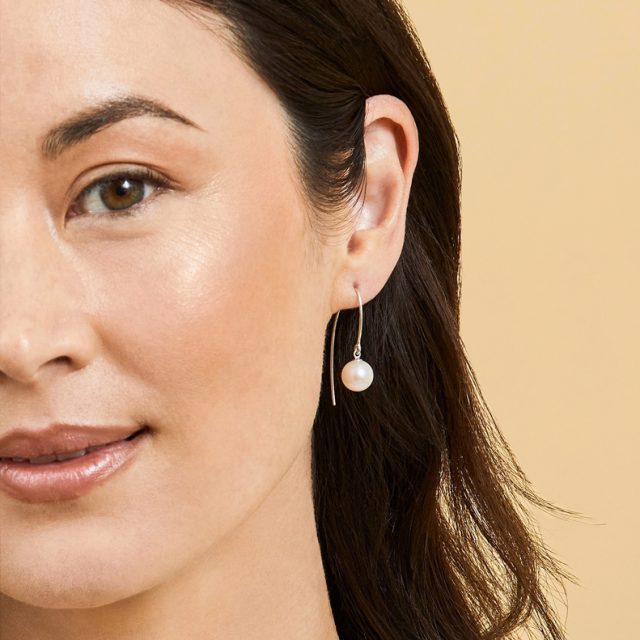
Delight a loved one on their June birthday with a classic addition to their jewelry box: a pair of Pearl Earrings. Whether you opt for June birthstone jewelry featuring Tahitian pearls and their alluring green and blue sheen, delicate pink or classic white birthstone earrings, there is no other gem as elegant as pearls.
Browse our collection and admire the beautiful June birthstone in modern and classic designs, including bridal and bridesmaid earrings, gifts for mom and classic and modern designs.
June birthdays deserve to be celebrated in style, with the Pearl, in all its types and color varieties! As one of the few gems created by a living creature, natural cultured pearls are truly unique. Whether June is your birth month or not, you can still enjoy the unique luster and many colors of these stunning June birthstone gems. And if you are shopping for a loved one, there is no better gift than the one featuring pearl and moonstone, the gorgeous gems of June.
June is one of the two months that has three birthstones, but Pearls are thought of as the primary birthstone for the month. The alternative gemstones for June are moonstone and alexandrite. All three are remarkable gemstones with distinct histories, colors, shapes, and meanings.
Pearls are undoubtedly one of the earth’s most unique gemstones. They are composed of calcium carbonate and they are the only gemstones to come from a living creature. These include mollusks such as oysters. Natural pearls form when a mollusk secretes nacre around an irritant, such as a piece of sand, leading to the creation of a pearl. Also, clams that come from specific oceans and rivers located in different parts of the world. Today, cultured pearls are one of the most popular gemstones. Pearls have a Mohs scale rating of 2.5-4.5, indicating they are relatively soft and require gentle care to maintain their beauty.

There are various interpretations as far as what the meaning of a natural pearls is. That’s mainly because so many different cultures treasured and embraced the gem and believed that pearls had special powers and benefits. What makes them truly unique: they are created by living creatures. Historically, the June birthstone was associated with water because of where it originated from. But, also with the moon because of their look.
Quick History of Pearls Facts: In ancient Chinese culture, people believed that pearls and mother of pearl brought wisdom. Today, pearls are most commonly believed to symbolize purity, integrity, and love. This belief comes from the ancient Greeks. They thought that pearls were Aphrodite’s hardened tears of joy. She is the ancient Greek goddess of love and beauty.
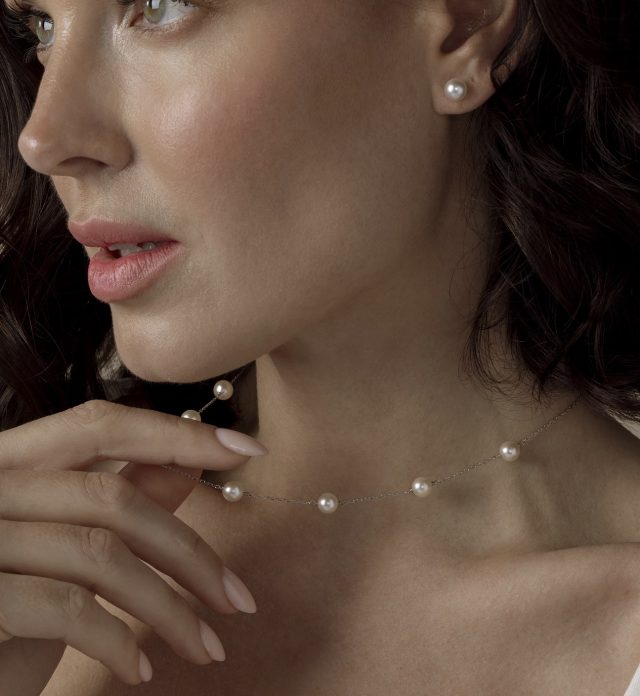
Few things compare to the natural luster, colors, and beauty of a natural pearl. Featuring unique designs that are strung with gold, station pearl jewelry is one of our favoritebirthstone gift choices for those with a June birthday.
Not only are there many stylish types of bracelets and delightful station necklace designs, but by incorporating the pearl birthstones, you can give and extremely thoughtful gift. Discover the beauty of these June birthstones!
People have treasured pearls since ancient times. In both ancient Egypt and Rome, royalty adorned themselves with the dazzling gemstone. Legends suggest that pearls symbolize purity and wisdom in various cultures, adding to their mystique and allure. Due to the extreme rarity and high value, they were symbols of power, class, and prestige. Though pearls continue to maintain very high levels of popularity today, they’re not the exorbitantly priced gems they once were.
For thousands of years, all pearls were natural pearls. That means that they developed in nature entirely on their own. Divers would risk their lives to dive deep into waters and collect mollusks to collect the highly valuable natural pearls. That’s despite the slim chances of actually finding a pearl. Given their extreme rarity, natural pearls were and still continue to be expensive. Nearly all natural pearls available on the market today are vintage pieces. This is primarily due to one development which changed the pearl industry forever.
In 1893, Kokichi Mikimoto developed the world’s first cultured pearls. These cultured pearls featured the same qualities as natural pearls. Also, they had more spherical shapes that people preferred. In the years that followed, the supply of cultured pearls increased dramatically. That lowered the price of the gems making them accessible by many more people. Cultured pearls were also a much more sustainable option than natural pearls. That’s because the population of wild mollusks was severely depleted by that point due to overharvesting. Today, nearly all pearls available for purchase today are cultured pearls. Natural pearls are extremely rare and valuable.
Kokichi Mikimoto, “My dream is to adorn the necks of all women around the world with pearls.”
In nature, pearls develop when a tiny particle gets trapped inside a mollusk completely by chance. To defend itself from this irritant, the mollusk begins to produce and coat the particle with nacre. It’s a composite made largely from aragonite that gives pearls their luster. In essence, this particle acts as the nucleus of the pearl. As the mollusk continues to coat the particle with nacre, a pearl slowly begins to form. It can take up to four years for a pearl to fully develop.
For cultured pearls, there is one significant difference in this development. It is how the particle is first introduced. Instead of this process happening randomly, pearl farmers deliberately insert it. From there, the process is exactly the same as for the natural pearl.

Pearls come in a variety of exquisite colors that are all unique in their own way. Although white is most commonly associated with the gemstone, they are also available in other colors. That includes black, pink, and even a golden hue. And while perfectly round pearls are most popular, the gemstones also feature different shapes. Some of these are baroque pearls, semi-baroque, and drop-shaped. Although baroque and semi-baroque shapes are slightly irregular, they give the gemstone a one-of-a-kind aesthetic. And more people are coming to appreciate them.
While color and shape are both important qualities of a pearl, many would say that a pearl’s luster is its defining characteristic. As mentioned before, this luster comes from the quality of the nacre that a mollusk uses to create the pearl. The luster is the reason why the gemstone reflects the light in such a way as though if it’s glowing from the inside.
The color, shape, and luster-quality of cultured pearls all depend on the type of pearl, which we discuss in the next section.
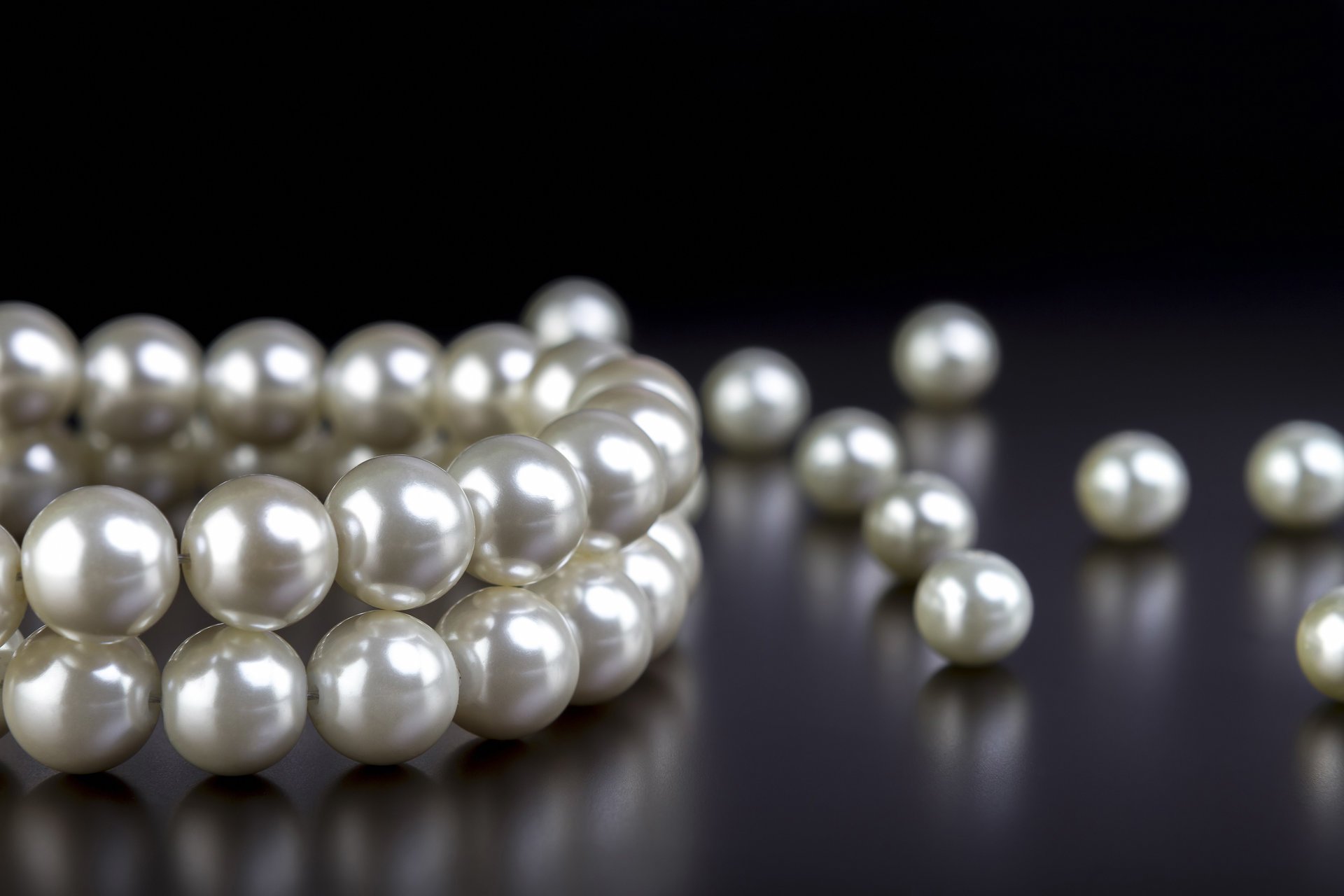
There are four pearl types: Freshwater, Akoya, Handama, Tahitian, and South Sea. Each type of cultured pearls features distinct characteristics that vary in the qualities we discussed above. Also, in size and value. Additionally, they all come from different geographic locations.
Freshwater Pearls: Found in lakes and rivers in China. Freshwater pearls are one of the most popular types of pearls. This is because of their reasonable price-points. Despite their affordability, they maintain a high level of quality. Especially in recent years with advances in Freshwater pearl cultivation. From white to pink, cream, and lavender, Freshwater cultured pearls come in a wide variety of stunning colors.
Imitation pearls can be abundantly found on the market today. The simplest way to tell if the jewelry piece you are interested in purchasing features natural or imitation pearls is the tooth test. Gems that feel smooth are not natural, and real freshwater cultured pearls feel textured against the teeth.
Japanese Akoya cultured pearls were one of the first types of pearls to get cultivated. They have since become a distinguished pearl type revered around the world. Not only do they feature perfectly spherical shapes, but also very high luster. A white Akoya pearl necklace is considered one of the most classic and timeless pieces of jewelry that money can buy. Akoya pearls are part of the saltwater pearls group. Some of the most lustrous Akoya Pearls are found on the coast of Australia and in Japan.
Despite their name, Tahitian pearls don’t only come from Tahiti. Instead, you can find them on the coast of many islands that make up French Polynesia. These rich black Tahitian pearls are unlike any other. And this is primarily due to the breathtaking colors of these cultured saltwater pearls. Most notable is their irresistible black hue. But, others include a peacock green, silver blue, and eggplant.
There are two variations of South Sea pearls: white and golden. White South Sea pearls are found on the coast of Australia. Meanwhile, Golden South Sea pearls come from the Philippines. Both feature pearls that are larger than any of the other types. They’re perfect for someone looking for a set of bold, lavish pearls. Recently, the white gems have been used in the creation of alternative engagement rings.
PEARL CARE GUIDE: Pearls deserve special care. To take the best care of your pearls, make sure you do not apply perfume directly on the gems. To clean your pearls, use a damp cloth or a very soft brush to wipe the surface. Avoid submerging the pearls in warm water, as this can harm the silk thread.
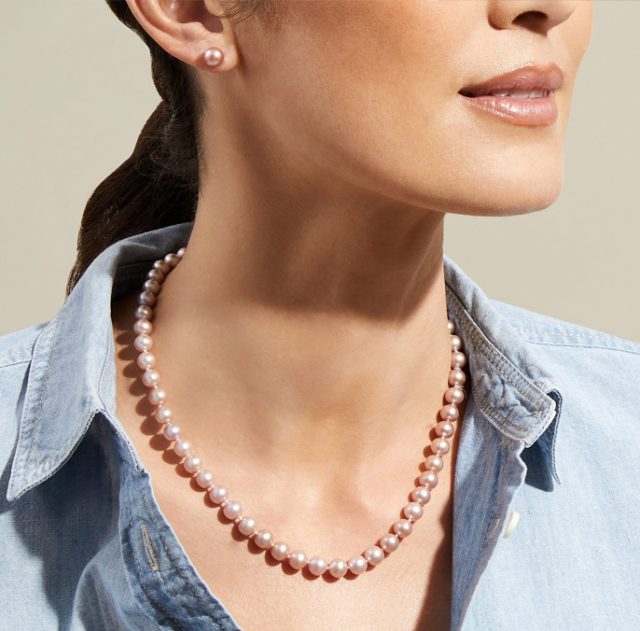
The perfect piece of pearl jewelry should be able to take any outfit to the next level, and work with a variety of different colors and styles. Pearl necklaces do just that, and a natural pearl is the ultimate symbol of natural beauty.
As one of the most iconic pieces of jewelry and one of the few gems created by living organisms, they provide the perfect touch of class, refinement, and shine. Whether you were born in June or any other month, there’s no doubt a pearl necklace is something every woman should have in their jewelry box.
he next June birthstone is moonstone, an incredibly luminous gemstone. Moonstone is a prominent member of the feldspar group of minerals. Though this June birthstone is not quite as popular as pearls, many would argue that it is just as beautiful.
The birthstone moonstone comes from the feldspar mineral group, which makes up a good portion of the earth’s crust. As a result, there are many different geographical locations where this June birthstone can be found. That includes the United States, Brazil, India, and Armenia, to name a few. They’ve been adorned by people for thousands of years. The stone has been prevalent in ancient Roman, Greek, and Hindu cultures. These gems were especially particular during the Art Nouveau era between 1890 and 1910. Jewelers in this period made frequent use of the gemstone to decorate jewelry.
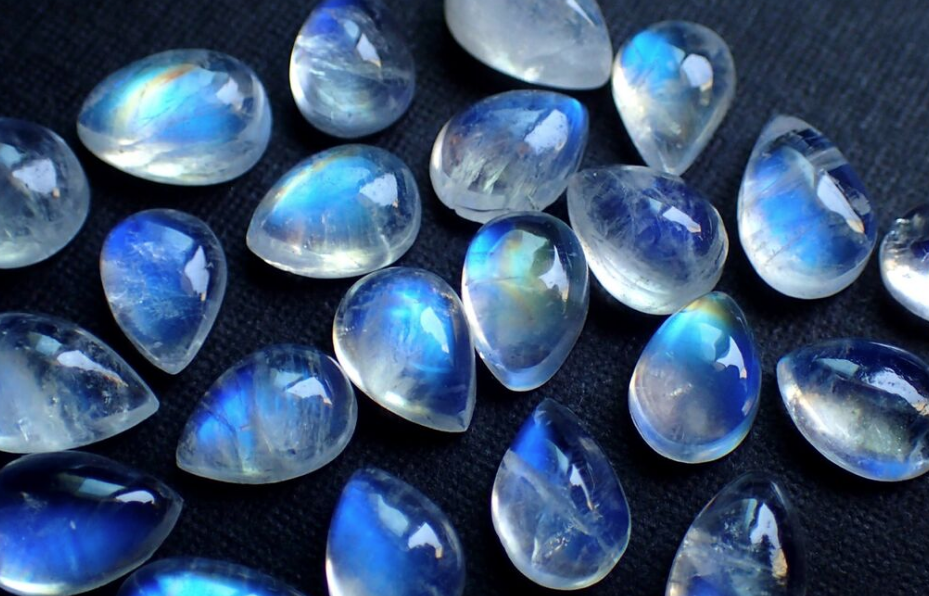
The most striking quality of moonstones is their adularescence, or schiller, as it’s often referred to as. As light strikes a moonstone, the internal structure of the June birthstone makes the light scatter. It gives the same visual effect as when clouds are lit up by the moon. This is where the name of the moonstone originates from. In fact, in many ancient cultures, the gemstone was thought to had been created from moonbeams.
The serene beauty of this June birthstone is where its meaning comes from. More precisely, the soothing aesthetic of the moon. Historically, the gem has been a talisman for the soul and spirit. Moonstones have a feminine, positive energy that brings inner-peace, tranquility, and balance like no other gem. The captivating appearance of the gem is indicative of this symbolism. Thus, making it easy to understand and embrace its meaning.
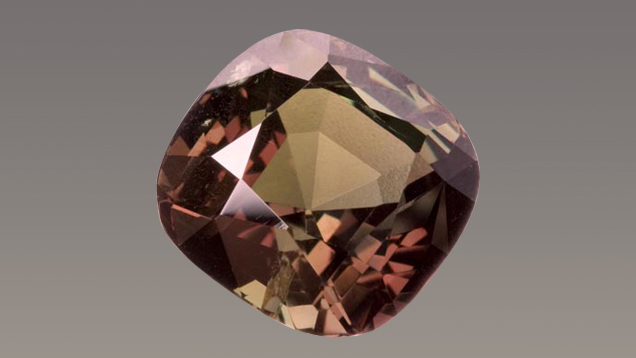
The third June birthstone is Alexandrite. This gemstone was discovered in 1830 by Finnish mineralogist Nils Gustaf Nordenskiöld. He initially believed that the gemstone was emerald. However, two distinguishing factors made him realize that he had found a new gem. One was that this stone was a lot harder than emeralds. Next was the way the stone changed color under light, which is unlike other gemstone.
This June birthstone was originally named diaphanite by Nordenskiöld. But, it didn’t last long. The stone came from Russia’s Ural Mountains—the only place in the world it was found at the time. With sole access to this gemstone, Russia’s royalty stepped in and renamed the newly discovered gem after the country’s future leader, Tsar Alexander II, hence the name of the gem. Alexander II was the most prominent Tsar of Russia, also known as Alexander the Liberator.
When Alexandrite was added to the list of June birthstones in 1952, Russia was still the only place of source. And by that point, the supply was extremely depleted. It wasn’t until thirty years later when other deposits of Alexandrite were found in India, Burma, and Brazil. Despite this new supply, this June Birthstone is still considered extremely rare. Thus, it is one of the world’s most expensive gemstones. This is the reason why alexandrite jewelry is very valuable.
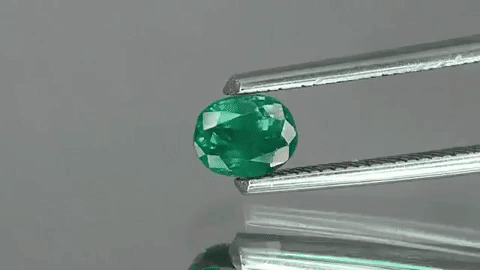
It shifts colors under different sources of light—what is sometimes called the “Alexandrite effect.” When viewed in daylight, the color varies from a bluish-green to a yellow-green. Under incandescent light, the color ranges from a pink hue to a crimson red. As the saying goes, “emerald by day, ruby by night.”
The scientific explanation for this color-change is as follows. Under different lighting conditions, this June birthstone absorbs specific wavelengths of the spectrum and reflects others. This is due to traces of chromium found in the gemstone. It results in strong absorption of yellow and green. In daylight where there is plenty of green light, the gemstone reflects this light back out. However, in artificial light, there isn’t a large source of green light. As a result, the gem instead reflects the red rays that the light source contains.
Since this June birthstone doesn’t have an ancient history as the case with the other two June birthstones, there isn’t as much lore tied to it. That said, since its discovery, people have come to associate the stone with a few meanings. As a birthstone, the gem inspires creativity and the imagination. It is also symbolic of hope, good fortune, positive energy and optimism, which is one of the main appeals of alexandrite jewelry. Thus, reminding us that each type of light brings a new beauty to life that should never be taken for granted. It’s also why the alexandrite engagement ring has become a popular modern gemstone option!
Pearls, moonstone and alexandrite are all known for their unique qualities. Fact is, the birthstones June has to offer are all highly unique. Whether you love iridescent pearl, luminous moonstone or color-changing alexandrite, June brings three gorgeous alternatives to the table.
January – garnet
February – amethyst
March – bloodstone, aquamarine
April – diamond
May – emerald
June – pearl, moonstone, alexandrite
July – ruby
August – sardonyx, peridot
September – sapphire
October – opal, tourmaline
November – topaz, citrine
December – turquoise, zircon, tanzanite
The main reason why some months have multiple birthstones is because various ancient stones have become too rare, so it is less likely for them to be available on the market and to satisfy consumer needs. June’s three birthstones are pearl, moonstone, and alexandrite – the only other month with three birthstones is December, with turquoise, zircon, and tanzanite.
Gemstones are some of the earth’s most beautiful natural treasures, and birthstones are give people a special connection to gems. If you’re born in June, consider yourself lucky to have three birthstone options that are all dazzling and embrace different meanings. With that being said, only one question remains: which is your favorite?
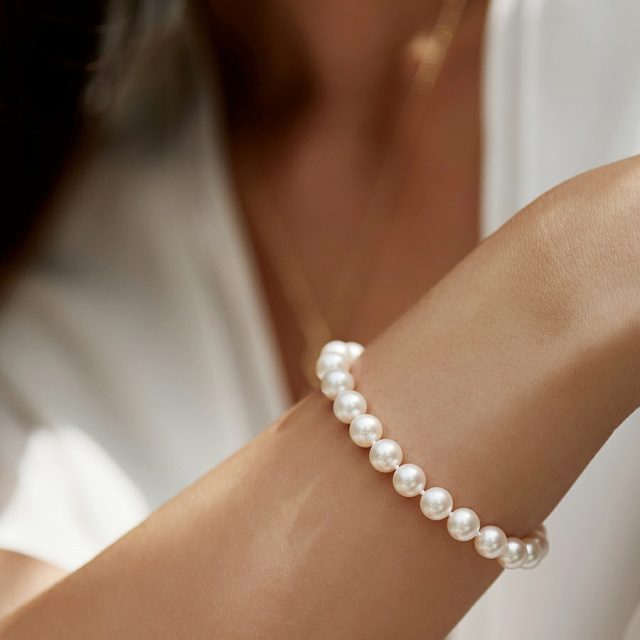
Imitation pearls can not compare with the mesmerizing beauty of natural gems. Real pearls are exquisite in all their varieties, shapes and sizes, but if unmatched luster is what you’re after, shop our collection of Hanadama Pearls.
Immaculate, mirror-like sheen and classic radiance, wrapped in classic white hues, all in a collection designed to stand the test of time.
The images above have been reproduced under the “fair use” doctrine of the US Copyright Act. This blog claims no credit and means no copyright infringement for any images published on this site unless otherwise noted. The images on this blog are copyright to their respectful owners. If there is an image appearing on this blog that belongs to you and do not wish for it appear on this site, please email us with a link to said image and it will be promptly removed.
Signup now and receive an email once I publish new content.

GIA Certified Pearl Expert and Content Writer
Lauren Greenberg is both a GIA-certified pearl expert and head of customer service at The Pearl Source, which means she seriously knows her pearls. She brings her in depth industry insight to everything we publish.
 Pearl Necklace Styles: A Complete Guide
Pearl Necklace Styles: A Complete Guide
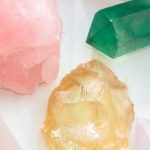 Birthstones: The Complete Guide to Their Meaning, History, and Jewelry
Birthstones: The Complete Guide to Their Meaning, History, and Jewelry